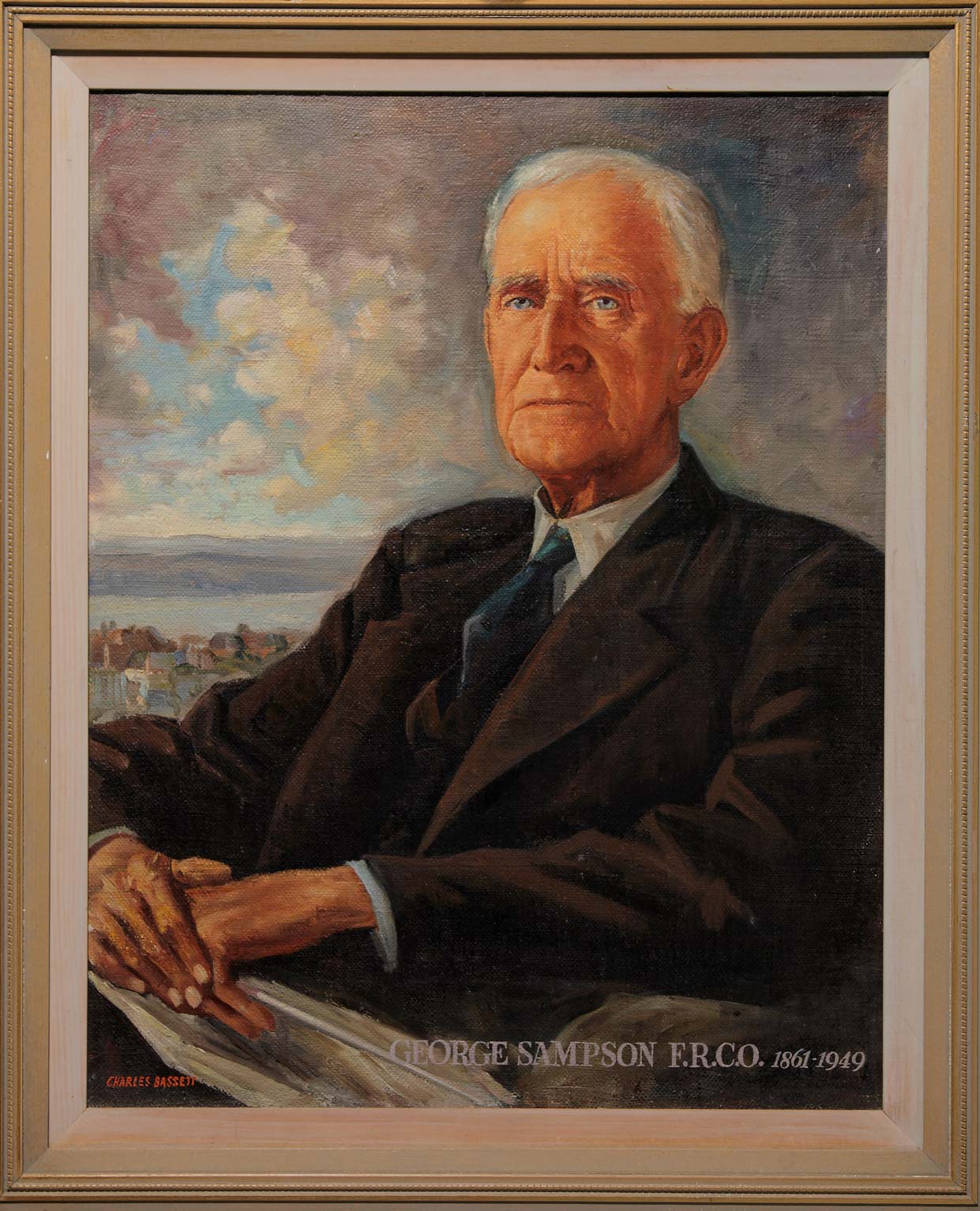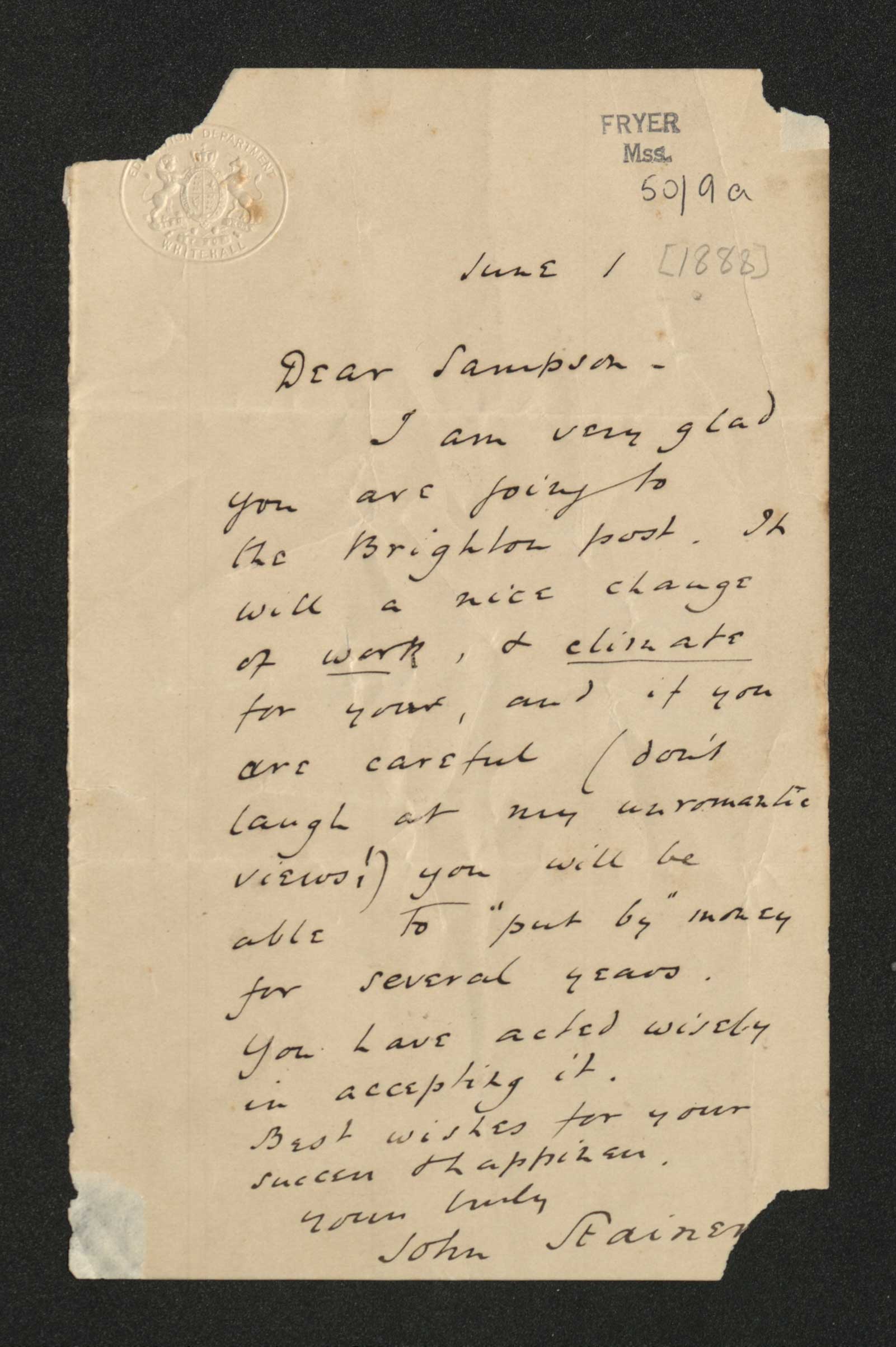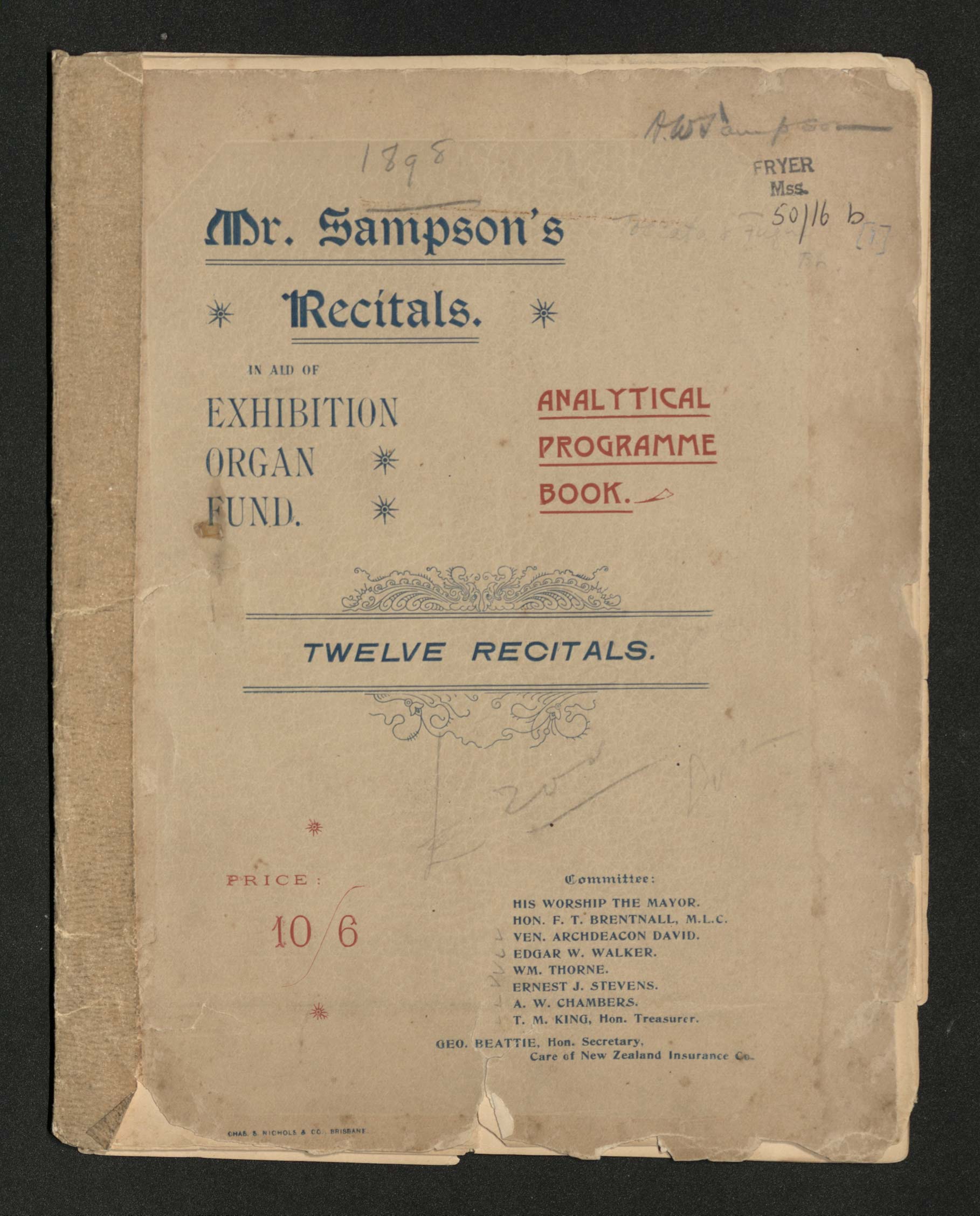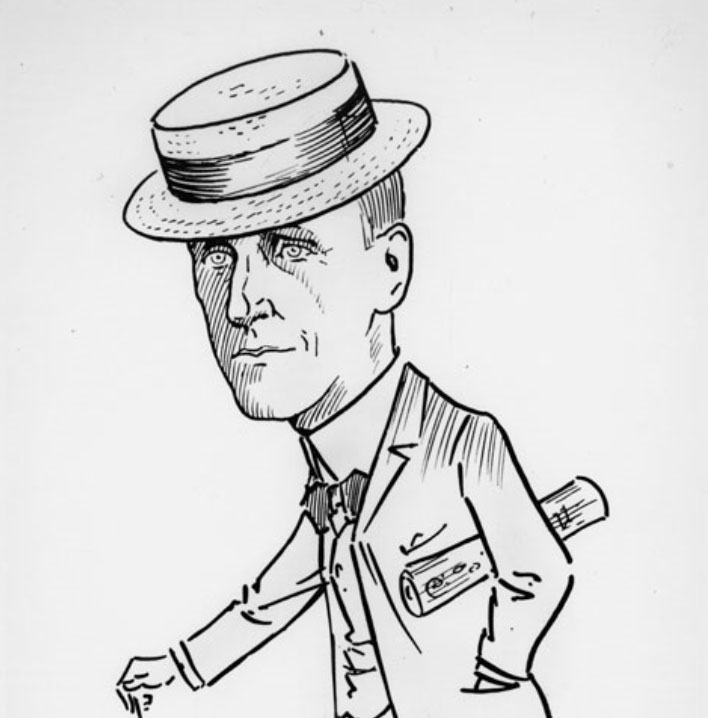UQ Museum Studies student, Alex Bowly recently worked with the George Sampson collection in the Fryer Library as part of an MUSM7000 course internship program. Alex discovered why Simpson decided to relocate to Australia in the nineteenth century and what exactly the Willis Organ had to do with this decision. Alex writes about his experience with the collection below.

by Charles Bassett, UQFL50
Searching through the George Sampson Collection in Fryer Library, I was able draw upon my own experience to delve further into one of the many stories of Brisbane’s history that The Library holds.
For more than half of my life, I have been a member of the Brisbane Chamber Choir, the chamber choir of St John’s Anglican Cathedral. It was there, in this iconic building that I would be, unknowingly, part of a great tradition and legacy, built on the foundations of George Sampson’s career.
Early years
Sampson’s early years in England shaped his professional life as a musician. From working in various churches and cathedrals to the friendships he made with the likes of John Stainer, Edward Elgar and George Risely.
Despite these friendships and vast experience, Sampson gained little notoriety. A letter from Stainer in 1897 alludes to the musical scene at the time. It was Stainer’s belief that England was “thoroughly over-stocked” with musicians and that the colonies were an ideal place to make a name for oneself.

It is difficult to know what direct impact this had on Sampson, however, there is a striking coincidence: In the same year, after meeting with William Webber (the Bishop of Brisbane) in London, George Sampson decided to move to Australia, accepting the post of organist at Brisbane’s Pro-Cathedral (later St John’s).
The Willis Organ
Sampson’s wife, Amy (nee Taylor) took notes on his views about encounters and activities: his first organ teacher (not so kind), the extravagant parties hosted by naturalist Frank Buckland at Christchurch, Oxford (including an anecdote about the appearance of a monkey). One such opinion, which perhaps informed his relocation, related to a Willis Organ.
Despite consideration to look for work in other Commonwealth cities, including Bloemfontein and Toronto, Sampson chose Brisbane with the hope of playing the Willis Organ, which was located there.
Sampson was therefore horrified to find that the organ was in the possession of the agricultural society. More worrying was the fact the organ was for sale and there was no real intention for it to remain in Brisbane.
Sampson’s first project on arrival, was to better the music scene of Brisbane by giving a series of 12 organ recitals on the Willis Organ. All proceeds were donated towards the Exhibition Organ Fund. To this date the original organ, although augmented, remains the city organ of Brisbane, housed in the Brisbane City Hall.
An orchestra is established
Sampson also focused his attention toward increasing the quality of orchestral and choral music in Brisbane. To this end he took up the baton of the Musical Union Choir.
For some years, the choir performed concerts alongside an orchestra made up of a small number of professional instrumentalists and large number of amateur instrumentalists.
Eventually Sampson grew tired of this model and formed an orchestra that would perform on their own. This group would soon to be known as the Sampson Orchestra. Funded largely from his own pocket, the orchestra survived although the financial burden would become too much, leading the eventual consideration of disbanding.
However, Sampson’s stubbornness and persistence once again prevailed, and he acquired funding first from the public and then the State and Local government, arguing that it was necessary for Brisbane to have its own orchestra.
With governmental funding now secured it was deemed necessary for the orchestra’s name to reflect their new supporters thus it was named the State and Municipal Orchestra. Sampson’s ideas through various iterations and names, survives today as the Queensland Symphony Orchestra.

fundraising concerts, UQFL50
Keeping time
Sampson’s metronome in the Fryer collection reflects his interest and the importance he placed on rhythm. In 1919, Sampson published a book dedicated to it, Rhythm: Its Power and its Neglect with the principles and laws which govern the Performance of Music.
The metronome, in good condition, is still able to beat time. To this end, it could be considered a representation of Sampson’s contribution to the beating heart of Brisbane music.
Another personal object of Sampson's his conductor's baton is also in the Fryer collection. Inscribed with the details of Sampson’s appointment as choirmaster at Brighton College, London in 1888, it is a memento of his early life in England. Whether or not Sampson continued to use the baton while in Brisbane, the fact that it has survived to form part of his collection shows its significance to him.
In 1947, almost 50 years after he started, George played his final service from the organ loft at St John’s Cathedral. His retirement was quiet and unfortunately brief owing to a traffic accident leading to his death on the 24th of December 1949.

State Library of Queensland Collection, Negative number: 147896
Legacy
Gaining some criticism towards the end of his career as stubborn and difficult to work with, Sampson’s legacy seems to be marred by this characterisation, leading to his relative obscurity.
We can only speculate what musical life may have been like in Brisbane if not for such an all-consuming effort from George Sampson. However, Sampson's efforts in championing music can still be seen today, more than 100 years after his arrival.
The Queensland Symphony Orchestra still thrives, the music of St John’s Cathedral remains of an unmatched spectacle and the grand Willis Organ holds pride of place in the Brisbane City Hall. Each of these is a manifestation of Sampson's belief and hard work. He was a man with a passion for music.